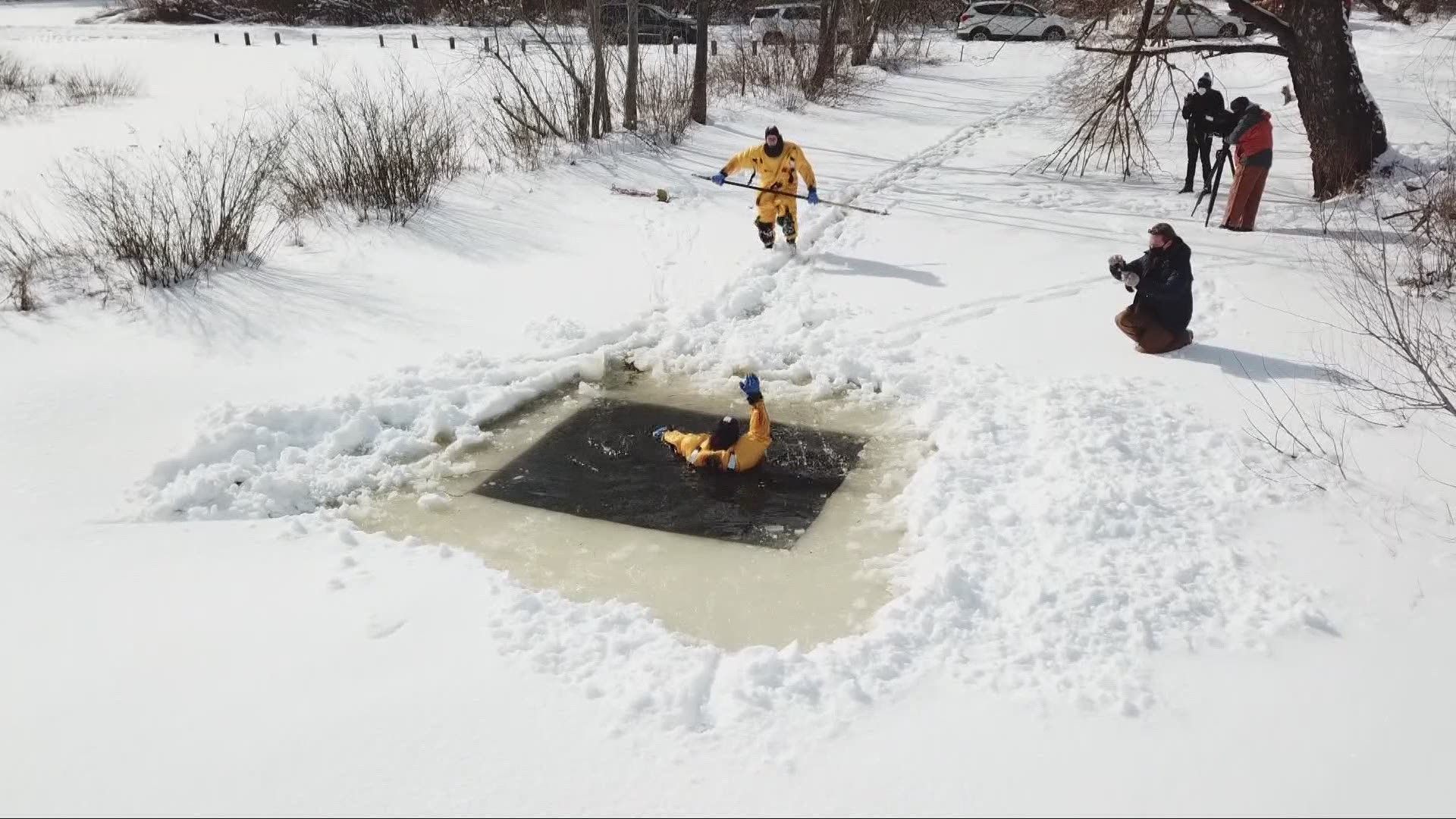GEAUGA COUNTY, Ohio — No ice is safe ice. It's a warning we hear every year, but also an important reminder of the risks of stepping onto ice-covered waters.
“It’s a traumatic event and your body does some interesting things,” says Clayton Kovats, a firefighter and medic for the Chardon Fire Department and the Dive Team Leader for Geauga County. “In the county, we get about 19 a year, where somebody goes through and is in peril.”
We see it every year. As the temperature dips, lakes and ponds become natural ice rinks, but serious trouble is only a crack away.
“You’re looking for four inches of clear or lake ice, where you can see right through it. You shouldn’t see a milky, white substance or bubbles. It should be nice, clean and clear water,” Kovats explains.
The Ohio Department of Natural Resources has a chart that tells you how strong or thick the ice is in different regions.
Kovats says having fun on the ice is fine, as long as you take precautions and are prepared. For starters, you shouldn’t go alone and if you happen to be with someone that falls in, don’t get too close.
“The best thing to do is to throw them something that they can manage to help get themselves back up on the ice, or reach out with a device,” says Kovats. “As soon as you have ice that is compromised and somebody goes through, that means the ice around there is weak.”
However, sometimes you may not even know you’re on the ice. What happens if you’re by yourself and by the time you realize you’re in danger, it’s too late?
“In the water, you have under 15 minutes to self rescue,” says Kovats.
He says you need to calm your breathing, get your head above water and find the ice. Use your shoulders for traction and kick your legs like you’re swimming. Once you get back on top the ice, roll away instead of standing.
He adds that there are a lot of precautions you can take before even getting into a situation like this. You should dress smartly by avoiding cotton which can soak in the cold water. You should also tell someone else where you’re going, when you’ll return and take the proper tools.
“If you’re on the ice, an ice awl is a great thing,” says Kovats. “You can buy them for about $10 and you can even make your own.”
You can’t be overly cautious. Kovats says there are about half a million cold water immersions, worldwide, every year.
“A lot of factors are out there,” says Kovats. “Learn about ice before you go out on the ice. It’s going to save your life.”

